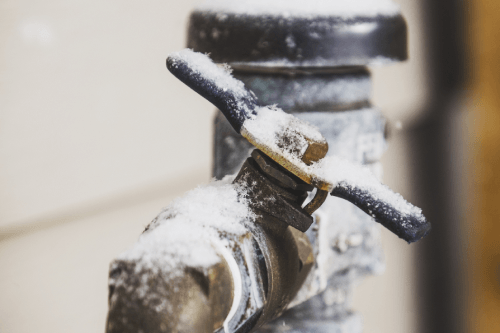Important Tips to Prevent Frozen Plumbing in Winter
Important Tips to Prevent Frozen Plumbing in Winter
Blog Article
We've found this post relating to Preventing and dealing with frozen pipes listed below on the internet and figured it made good sense to write about it with you on this page.

Cold weather can damage your plumbing, specifically by freezing pipelines. Right here's just how to prevent it from occurring and what to do if it does.
Introduction
As temperatures decline, the danger of icy pipelines increases, possibly leading to expensive repairs and water damages. Understanding how to avoid icy pipes is critical for property owners in cool climates.
Comprehending Icy Pipelines
What causes pipelines to ice up?
Pipes freeze when subjected to temperature levels listed below 32 ° F (0 ° C) for expanded durations. As water inside the pipes freezes, it expands, putting pressure on the pipe walls and potentially causing them to burst.
Risks and damages
Frozen pipes can lead to supply of water disruptions, residential or commercial property damages, and costly fixings. Burst pipes can flooding homes and cause substantial structural damage.
Indicators of Frozen Pipeline
Recognizing icy pipes early can avoid them from breaking.
Just how to identify frozen pipelines
Look for decreased water flow from taps, uncommon smells or noises from pipelines, and visible frost on exposed pipelines.
Avoidance Tips
Shielding prone pipelines
Wrap pipelines in insulation sleeves or use heat tape to shield them from freezing temperatures. Focus on pipes in unheated or exterior locations of the home.
Home heating techniques
Maintain indoor rooms adequately heated up, specifically locations with pipes. Open cabinet doors to enable cozy air to flow around pipelines under sinks.
Protecting Outdoor Plumbing
Garden hoses and outdoor faucets
Disconnect and drain pipes yard tubes prior to winter months. Mount frost-proof faucets or cover outside faucets with insulated caps.
What to Do If Your Pipelines Freeze
Immediate activities to take
If you think frozen pipelines, maintain faucets open to relieve stress as the ice thaws. Use a hairdryer or towels taken in warm water to thaw pipes gradually.
Long-Term Solutions
Structural adjustments
Take into consideration rerouting pipes far from exterior wall surfaces or unheated locations. Include additional insulation to attics, basements, and crawl spaces.
Updating insulation
Buy top notch insulation for pipes, attic rooms, and wall surfaces. Proper insulation aids maintain constant temperature levels and decreases the risk of frozen pipes.
Conclusion
Avoiding frozen pipes calls for positive actions and quick feedbacks. By comprehending the causes, indicators, and preventive measures, house owners can secure their plumbing during winter.
5 Ways to Prevent Frozen Pipes
Drain Outdoor Faucets and Disconnect Hoses
First, close the shut-off valve that controls the flow of water in the pipe to your outdoor faucet. Then, head outside to disconnect and drain your hose and open the outdoor faucet to allow the water to completely drain out of the line. Turn off the faucet when done. Finally, head back to the shut-off valve and drain the remaining water inside the pipe into a bucket or container. Additionally, if you have a home irrigation system, you should consider hiring an expert to clear the system of water each year.
Insulate Pipes
One of the best and most cost-effective methods for preventing frozen water pipes is to wrap your pipes with insulation. This is especially important for areas in your home that aren’t exposed to heat, such as an attic. We suggest using foam sleeves, which can typically be found at your local hardware store.
Keep Heat Running at 65
Your pipes are located inside your walls, and the temperature there is much colder than the rest of the house. To prevent your pipes from freezing, The Insurance Information Institute suggests that you keep your home heated to at least 65 degrees, even when traveling. You may want to invest in smart devices that can keep an eye on the temperature in your home while you’re away.
Leave Water Dripping
Moving water — even a small trickle — can prevent ice from forming inside your pipes. When freezing temps are imminent, start a drip of water from all faucets that serve exposed pipes. Leaving a few faucets running will also help relieve pressure inside the pipes and help prevent a rupture if the water inside freezes.
Open Cupboard Doors
Warm your kitchen and bathroom pipes by opening cupboards and vanities. You should also leave your interior doors ajar to help warm air circulate evenly throughout your home.

Do you enjoy more info about 6 Ways to Prevent Frozen Pipes? Give a review further down. We'd be glad to find out your reactions about this review. We hope that you visit us again in the future. Appreciated our entry? Please quickly share it. Help other people find it. I recognize the value of your readership.
Top Article Report this page